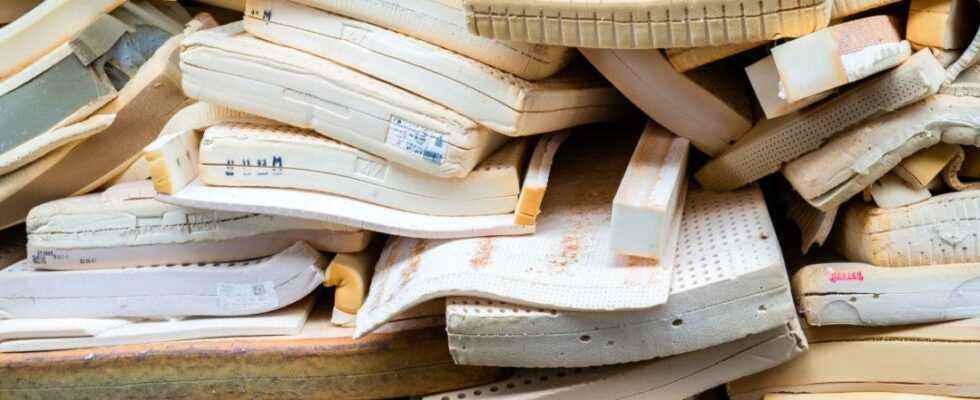Recycling mattresses has been possible since 2012, but this circular economy remains subject to many received ideas.
“ I come from a home where we loved each other, rested, bickered, amused… In short, life! 4 million French people throw me away every year, and I take 1 century to decompose in nature.” Who am I? It is through this riddle that Secondly, a recycling company, introduces the reuse of raw materials from all mattresses.
Read alsoBarbara Pompili urges companies to “turn the corner” of the ecological transition
If there has been legislation since 2012 on the recycling of all furniture products, the Covid has nevertheless been the trigger for a clear awareness of manufacturers and individuals in terms of recycling.
The fact remains that certain received ideas persist in the face of these recycled mattresses: “me, I would be afraid that there are bed bugssays Celine. A normal a priori according to Timothée Coisne who notes: “We touch the intimate“. The mattresses, however, pass in an oven at 160 degrees, a hygienic guarantee. On the side of entrepreneurs, uncertainty remains regarding their status: “at the administrative level, I do not existsays Timothée Coisne. “Am I a recycler or an industrialist?”: questions are likely to be reinforced with the growing importance of waste treatment and its scandals of fly tipping.
Necessary support
Every 4 seconds, a mattress is buried underground according to Planetoscope, a real-time global environmental statistics site.
Faced with this observation, decree no. 2012-22 of 6 January 2012 relating to the management of waste from furniture items appears in the Official Journal. Its purpose is as follows:implementation of a system of extended producer responsibility for the prevention, collection and treatment of furniture waste“. This decree concerns mattress distributors but also collection operators and communities.
It is therefore legislation that has led bedding companies, such as the Compagnie du lit, to think about recycling their products and becoming part of a circular economy. Eco-organizations, such as Eco-Mobilier or Valdelia, take care of recovering the mattresses in dumpsters with the agreement of the communities before sorting them and distributing them to companies which dismantle and create new products from these old ones. mattress.
Before the appearance of this text of law, mattresses were buried, thrown away, burned: ultimately, “nothing was happeningaccording to Timothée Coisne, co-founder at Secondly. This company, like Recyc Matelas Europe or other players, is committed to creating value by recycling old used mattresses.
Mattresses are all the same a particular type of waste, reminds us of Julien Bouzenot, director of Rudologia, an association which brings together all the players in the waste sector: the first stage of recycling is that of dismantling the product, but a mattress is made up of several materials such as foam or springs, hence the difficulty of recycling such a product.
In 2014, only 10 to 15% of mattresses were recycled: today, 98% of the 7,500 tonnes of mattresses collected are recycled. A whole sector has been created, from eco-participation, paid by the consumer when purchasing furniture, to the transformation into recycled mattresses, for example. It is eco-participation, a new system compared to our European neighbors and which generates 1.5 billion euros, which allows communities to have contracts with eco-organizations, a link between the public sector and companies. of transformation.
A booming business
For 10 years, there has been a “desire to capture this depositaccording to Timothée Coisne. According to the entrepreneur, the pandemic has been like a wake-up call for manufacturers, for whom “it would have been easier to do as before.In his company, around 750,000 mattresses are recycled per year.
Waste never ceases to interest the industry: around 7,500 tonnes of mattresses were collected in 2020 and 98% recycled, according to the think tank Rudologia, which is interested in the study. waste, based in the Jura, a pioneer territory in waste processing since the 1990s. There are now a number of experts who present themselves as rudologists, i.e. waste management professionals, proof of the interest for this growing resource.
